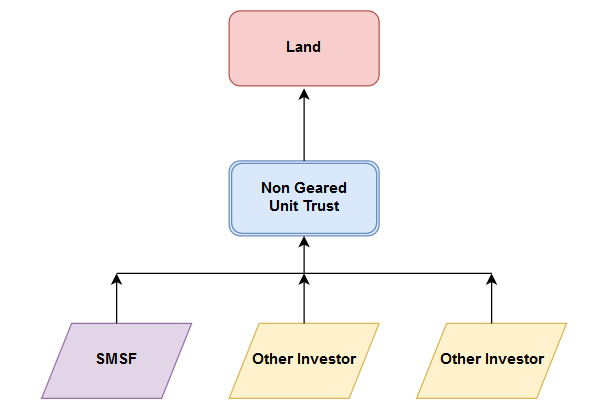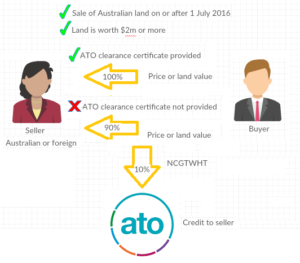 Contractual principles apply to construe trust resolutions
Contractual principles apply to construe trust resolutions
The Full Court of the Federal Court in Lewski v. Commissioner of Taxation [2017] FCAFC 145 has given us a roadmap to construing trust resolutions in line with principles for the construction of contracts, from Byrnes v Kendle [2011] HCA 26, and has applied two of those principles of contractual construction to pinpoint invalid trust resolutions as follows:
- an invalid trust resolution can be severed from another valid resolution or resolutions so that those resolutions can stand, but only if those resolutions are not interdependent with the invalid resolution and it is not artificial for them to stand severed from the invalid resolution; and
- if there are two open constructions of a trust resolution, one of which results in validity and one of which results in invalidity, the construction that preserves validity is to be preferred.
Trust resolutions to confer a present entitlement to discretionary trust income
An Australian tax resident beneficiary must be presently entitled to the income of a discretionary trust in the income year in which income has earned by the trust before the relevant share of that income can be included in the assessable income of the beneficiary: sub-section 97(1) of the Income Tax Assessment Act (ITAA) 1936. If it cannot be shown that:
"the beneficiary has an interest in the income which is both vested in interest and vested in possession; and (b) the beneficiary has a present legal right to demand and receive payment of the income, whether or not the precise entitlement can be ascertained before the end of the relevant year of income and whether or not the trustee has the funds available for immediate payment." High Court in Harmer v. Commissioner of Taxation (1991) 173 CLR 264 at p. 271
then the beneficiary is not presently entitled to the relevant share of income with section 99A of the ITAA 1936 applying to tax the trustee on the income to which no beneficiary is presently entitled at the highest individual marginal income tax rate.
Ownership and present right to demand payment
“Vested in interest” and “vested in possession” are technical concepts which broadly equate to ownership, and the extent of ownership required for present entitlement is ownership of the share of income sufficient to bestow a present legal right to demand payment of the income. The legal right to demand and receive payment of an ascertainable entitlement to a share of income must be present and fully defined in the income year even if the entitlement cannot be numerically ascertained due to accounts not having been taken by the end of the relevant income year. In a discretionary trust the trustee is generally reliant on a valid year end trust resolution to distribute income of the trust to confer a sufficient present entitlement to the income of a discretionary trust on a beneficiary so that section 99A will not be attracted.
After Bamford
We have known, especially since 2011, when the Commissioner of Taxation came to take a harder and more sophisticated line on year end trust resolutions following the High Court decision in Commissioner of Taxation v Bamford [2010] HCA 10 and the Tax Laws Amendment (2011 Measures No. 5) Act 2011 introduced in response to the Bamford decision; that the form of the year end trust income distribution resolution is vital to the taxation of discretionary distributions to beneficiaries.
Construing the Lewski trust resolutions
In Lewski discretionary trust resolutions to distribute income were stress tested for present entitlement, meaning and validity to determine where liabilities to tax lay.
The Commissioner, in amended assessments issued to Ms. Lewski, and the Administrative Appeals Tribunal (“AAT”) at first instance, disallowed carry forward tax losses to discretionary trusts and assessed trust income of $10,108,621 and $3,143,199 to Ms. Lewski as a presently entitled beneficiary of each trust under sub-section 97(1). Ms. Lewski sought to reduce or deflect the tax liability on this income by claiming that, alternatively:
- the carry forward trust losses should have been allowed as deductible to the trusts;
- her entitlements to the income of the trusts had been disclaimed;
- the trust distributions were ineffective as they were made in a manner beyond the power of the trustees; and
- Ms. Lewski was not presently entitled to the trust distributions;
which the Commissioner disputed.
The strategy of Ms. Lewski was to reduce the liability to tax or to deflect liability to tax under the amended assessments elsewhere, whether to the trustees of the trusts on income to which no beneficiary was presently entitled under section 99A or to default beneficiaries of the trusts, companies ACUPL and AISPL respectively (abbreviated), claimed to be entitled to the adjusted income of the trusts under the amended assessments instead of Ms. Lewski. It is supposed that, in both income years, less tax was recoverable by the Commissioner in those cases than if Ms. Lewski was presently entitled as a beneficiary of the trusts to the adjusted income.
Ms. Lewski wins
Before the Full Court of the Federal Court Ms. Lewski successfully challenged the disallowance of the tax losses and thus won her appeal against the imposition of the tax liabilities.
Resolutions under scrutiny
The applicable year end trust resolution documents distributed the income of the trusts:
2006 year:
100% to Ms. Lewski
2007 year:
the first $3.5 million to AISPL and the balance to Ms. Lewski.
In each resolution document, there was also a ‘variation of income’ resolution to the effect that, should the Commissioner disallow any amount claimed as a deduction or include any amount of the deduction in the assessable income of the trust, there would be a “deemed” distribution to the default beneficiaries (in the 2006 year, 100% to ACUPL; in the 2007 year, 100% to AISPL).
The “variation of income” resolutions made the 2006 year and 2007 year distributions contingent on events that could occur after the end of those years of income respectively. The Commissioner contended that the variation of income resolutions, which were of doubtful validity, could be severed from the valid resolutions in the resolution documents distributing the income of the trusts. Applying the principles and authorities relating to the severance of provisions in contracts the court did not accept this approach. The distribution resolutions and the variation of income resolutions where found to be interdependent and so the variation of income resolutions could not be “severed” from the distribution resolutions with the effect that either:
- each purported income distribution was subject to a live contingency in the variation of income resolutions after the end of the applicable income year – the court’s preferred view; or
- the distributions failed as the interdependent variation of income resolution was invalid in each case – the court’s alternative view;
defeating the present entitlement of Ms. Lewski to the income of the trusts at the end of the year of income of each trust in either case.
The trust deeds of each of the trusts contained notably complicated clauses for the ascertainment and distribution of the income of the trusts. Ms. Lewski contended that the distribution of “income” in the trust resolutions, rather than “net income”, was beyond the power of the trustees and so failed as resolutions beyond the power of the trustees given in the trust deeds. The court rejected this contention after applying the contractual principle that where there are two open constructions of a provision, the construction of the provision that preserves validity is to be preferred. From that perspective “income” in the trust resolutions could be treated as meaning “net income”.
Construing income equalisation clauses
Two aspects of the Full Federal Court decision in Lewski are useful in construing income equalisation clauses in discretionary trust deeds.
Generally an income equalisation clause sets the net income of the trust to which sub-section 97(1) applies, being “trust income” or “distributable income” identified in Bamford, equal to the net income of the trust under section 95 of the ITAA 1936. Understanding that the Commissioner can amend the net income of the trust under section 95 by an amended assessment well after the end of the income year, can this contingency affect the “trust income” or “distributable income” by which the shares and proportions of income distributed to beneficiaries are ascertained?
The preferred construction, if available, of an income equalisation clause is that “trust income” is set to the net income of the trust under section 95 of the ITAA 1936 based on understandings that are ascertainable at the end of the year of income when the income distribution is made. In other words the taxable income of the trust that is ascertainable. That follows from Lewski where the court found, in the context of distributions asserted by Ms. Lewski to be beyond the power of the trustees, that where there are two open constructions of a trust distribution resolution, the construction which results in validity is to be preferred to the construction which results in invalidity.
“Trust income” needs to be closed at year end
To sustain a valid construction an income equalisation, effectuated by an income equalisation clause in a discretionary trust deed, needs to be a closed parameter at the end of a year of income. If the parameter is open, that is, if “trust income” or “distributable income” identified in Bamford is not fully ascertainable by the end of the applicable income year using the income equalisation mechanism in a trust deed, then a distribution based on trust income reliant on that mechanism will not confer a present entitlement and section 99A can apply to the income purportedly distributed as income to which no beneficiary is presently entitled.



